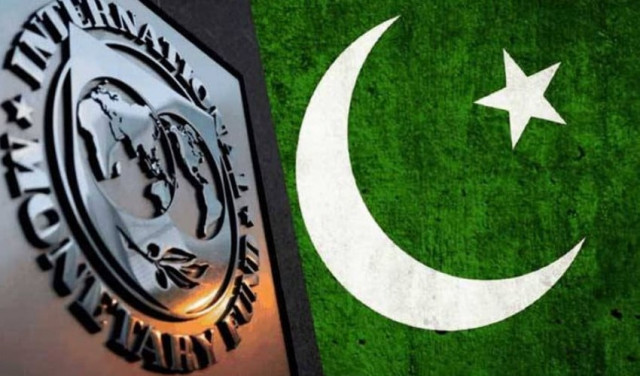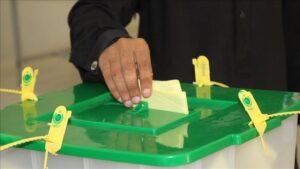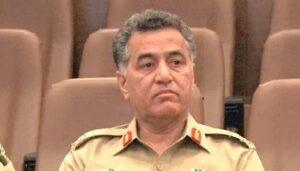Islamabad:
The International Monetary Fund (IMF) on Tuesday projected Pakistan’s economic growth rate at 3.6% for the current fiscal year, below the official government objective of 4.2%. The projection was published in the latest Outlook Economic World update report of the IMF that maintained the growth forecast of Pakistan without changes.
The Government had established a higher growth objective based on the expected recovery in the agricultural and industrial sectors. However, the World Bank recently estimated that poverty in Pakistan affects almost 45% of the population. Official data on poverty and unemployment are not currently available, although it is said that the Pakistan Statistics Office (PBS) is updating relevant surveys. Due to obsolete data, the provisional growth rate of GDP of 2.7% for fiscal year 2014-25 has been disputed by independent economists. The PBS plans to publish findings of the last agriculture census next month, which can address some of these consultations.
The same day, the Federal Government also informed foreign diplomats about recent economic developments and sought support to increase foreign direct investment (FDI), which is still low. The diplomats raised concerns about the increase in debt costs, the great dependence on the expensive commercial loans, fiscal deduction measures and the sustainability of the energy division plan to reduce circular debt through RS1.25 billion in fresh national loans.
The Minister of State Finance, Bilal Azhar Kayani and the Minister of Power, Sardar Awais Ahmad Khan Leghari, directed the information about diplomats from the United States, the United Kingdom, EU, Italy, Germany, Canada, Australia, Switzerland, Japan, the Netherlands and Saudi Arabia. According to a press release from the Ministry of Finance, officials described tax reforms and the electrical sector. Kayani said that Pakistan’s macroeconomic strategy had changed stabilization to sustained reform. He pointed out that GDP growth was 2.7% in fiscal year 2014-25, and per capita income increased by 10% to $ 1,824. However, this was based on old and relatively low population estimates.
The Ministry of Finance claimed a primary surplus of 3.1% in GDP, the highest in 20 years, although it did not clarify in the press note if this was throughout the year or only the first 11 months.
Inflation decreased to 4.5%, a minimum of nine years, while the policy rate of the Central Bank was reduced from 22%to 11%. According to reports, the debt / GDP ratio also decreased to 69%, indicating improved tax management.
Diplomats asked how the government planned to reduce the high cost of external debt. The authorities said that the strategy had already ended both with the IMF and the World Bank. The Ministry of Finance said that the external sector showed resilience, registering a current account surplus of $ 2.1 billion, the first in 14 years and the highest in 22 years. This was supported by strong remittances, greater exports, IED increasing and foreign reserves of more than $ 14.5 billion.
The authorities affirmed that this action was achieved without a great dependence on foreign loans. However, the Central Bank bought at least $ 7.3 billion from the local market between July and April, which kept the artificially low rupee. This sum exceeded the entire three -year size of the IMF rescue package.
Diplomats were also told that two credit rating agencies had recently granted Pakistan positive reviews, and Moody’s will update the country soon. S&P improved Pakistan a ‘B negative’ last week, advising more political and security stability for continuous progress.
In the energy sector, Leghari told diplomats that significant milestones had been achieved, although the questions followed on their long -term sustainability. He said that the circular debt, now around RS2.4 billion, was being addressed by virtue of a plan agreed with the IMF.
The Government has assured RS1.25 billion on commercial loans to pay a large part of this debt. The reimbursement will be financed through an Electricity surcharge of RS3.24 per unit, ultimately, assumed by consumers. The diplomats questioned whether this approach was sustainable. Leghari recognized structural problems, such as high rates and inefficient prices, which had made electricity without lack of households and industry. These problems had also created tax pressures.
To address them, the Government has undertaken broad base reforms focused on tariff rationalization, fiscal responsibility and operational improvement. Leghari said that progress had been made in the stabilization of circular debt in fiscal year 2025.
He also pointed out the need to modernize energy planning to account for seasonal demand changes, regional supply gaps and the growing role of distributed generation.
The performance of the distribution company was another key approach. Leghari said that infrastructure improvements and strengthened governance were underway to reduce losses, with reforms implemented to guarantee regional equity and institutional coordination.
He asked foreign governments and global investors to invest in the energy sector, citing $ 2-3 billion in potential through the modernization of the network, renewable energy, distribution efficiency and energy services. He also noted that the Government aims to privatize electricity distribution companies, with three companies restructured for privatization in early 2026.
President FBR, Langial Rashid, informed diplomats about the FBR transformation plan, built in three pillars: people, processes and technology. He said that real tax collection had increased by 46% due to better compliance and application.
He also declared that the GDP imposed relationship increased to 10.24% in fiscal year 2010, compared to 8.8% in fiscal year 2024.
However, Pakistan still lost its IMF’s income goal at 0.3% of GDP, despite raising record taxes last year.




